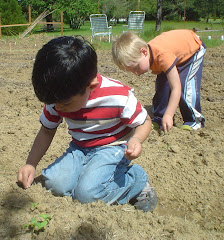A unique and viable approach to establishing local food self-reliance while building stronger communities.
 |
| Sharing creates abundance! |
We've been watching the dramatic weather world-wide:
floods, droughts, hurricanes, tornadoes, heat waves and record snows! In
recent years, every country that grows food has experienced repeated
significant crop-failures. Pests, weather and super-weeds are all taking
their toll. It seems more important than ever for people to learn to
grow, at least
some, of their own food. At the Sharing Gardens
(MAP),
we demonstrate a style of gardening that builds soil fertility using
locally-generated, renewable and sustainable materials - like leaves and
grass-clippings - that are commonly considered waste products. This
model also fosters trust and a sense of community at the neighborhood
level; relationships that can be called upon in times of social, or
environmental stress. It by-passes "business-as-usual" in that it
generates a bounty of "organic" fruits and vegetables feeding far more
people than it takes to run it and no money ever changes hands. We call
it a "Sharing Garden".
 |
| Sharing the bounty - garden helpers "shop" for their week's vegetables. |
What
makes these Sharing Gardens unique is that, instead of many separate
plots, that are rented by individuals, we all garden together. All
materials and labor are donated. The food we grow is shared by all who
have contributed in some way. All surplus is donated to local
food-charities (like Food Banks and Soup Kitchens). No one is ever
charged money for the food that is grown.
 |
| Lettuce and other vegetables being donated to a local food-charity. |
This model is easily replicated anywhere there are
vacant lots with a water-source, and people with enough gardening
experience to oversee the project and does not require a large input of
money to make it work. It can be adapted to many different scales of
gardening; from a few families who live and garden on the same block, to
a multi-acre production farm. "Sharing Gardens" help keep materials out
of burn-piles and the land-fill (garbage dumps) through re-using,
re-purposing and encouraging people to share their surplus.
Overview of the Sharing Gardens
Benefits of a Sharing Garden
Harvest Totals - 2012
Using Leaves and Grass-Clippings to Create Soil-Fertility
Wish List - To Donate
To view videos about the project,
LINK including the the Peak Moment video:
The Giving is Growing.
To read articles about the project:
Click Here
 |
| Volunteers from our local university help the gardens thrive! |







































